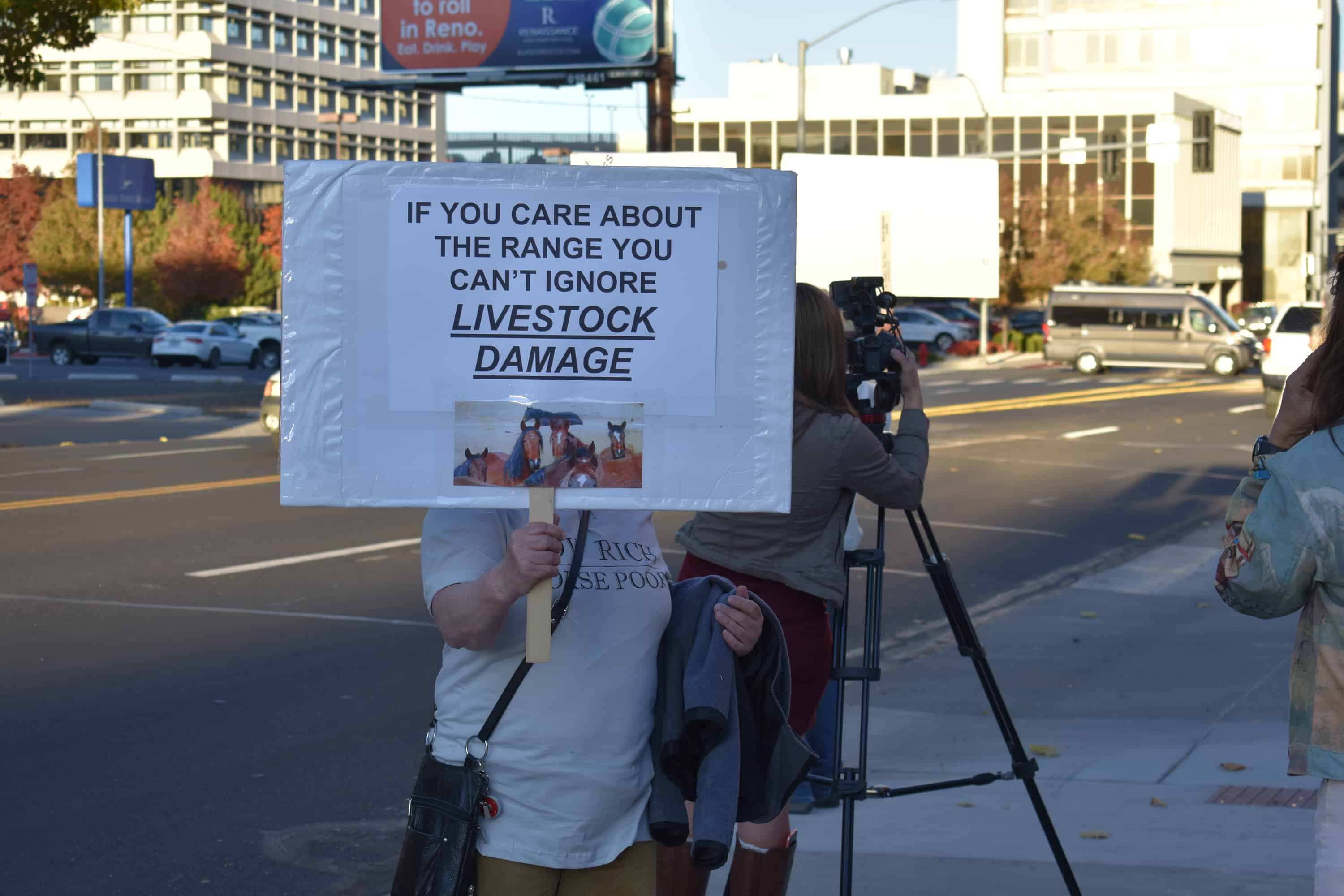Wild horse and burro advocates in Nevada are not pleased by Senate Joint Resolution 3.
If passed, the resolution would be transmitted to Congress to urge federal lawmakers to implement and fund the Bureau of Land Management’s recommendations first presented to the United States Senate in 2019 to control horse populations across the Western United States. The BLM would increase “roundups,” as well as the application of birth control and long-term pasturing and corralling through both public and private facilities.
Wild horses and burros have held a protected status since the passage of the “Wild Free-Roaming Horses and Burros Act” a half a century ago. Since then, controversy surrounding their management has been ongoing, with some pointing to their beloved, iconic status in the West and others speaking to concerns about their effects on rangelands and potentially dangerous run-ins with motorists.

Today, the population of wild horses and burros across the western U.S. is approaching nearly 100,000, and more than half of them are in Nevada. Wild horse and burro advocates often point to the fact that Nevada alone has nearly a half a million cattle on its rangelands.
“The Path Forward for Management of BLM’s Wild Horses & Burros,” was, upon its release by the BLM in 2019, hailed as an unprecedented alliance between animal rights groups and the livestock and farming industries. Its backers included the Humane Society of the United States, the American Society for the Prevention of Cruelty to Animals, Return to Freedom Wild Horse Coalition, the National Cattlemen’s Beef Association and the American Farm Bureau Federation
It includes four main actions to be taken that the coalition of organizations behind it believe can provide “solutions for the short and long-term health” of wild horses, burros and Western rangeland:
“(1) Relocate removed wild horses and burros to more cost-effective pasture facilities, (2) Contract with private parties to secure lower-cost leasing of land for long-term humane care of removed horses and burros, (3) Apply proven, safe and humane population growth suppression strategies to every herd that can be reached utilizing trained volunteers, Agency staff, and animal health professionals, as individual HMAs dictate to prevent repeated gathers and (4) Promote adoptions in order to reduce captive populations and costs.”
The plan would call for the removal of 15,000-20,000 wild horses from the range via controversial roundups during its first three years. This number would likely “drop to 5,000-10,000 per year for the remainder of the proposal term as fertility control takes effect.”
The timeline for the reduction of wild horse and burros to what the BLM considers an appropriate management level (AML) for Nevada—12,800 in total—is six years.
SJR 3 proponents and opponents disagree on the problem and solutions
During presentations in support of SJR 3 made to the Senate Committee on Natural Resources on March 23, proponents of the resolution pointed to the disparity in the population of wild horses and burros in Nevada compared to big game animals. There are more than twice as many horses. However, opponents of the resolution responded during their own testimony that figures for the number of livestock in Nevada were conspicuously missing.
After Jim Sedinger, a professor emeritus of wildlife ecology at the University of Nevada, Reno, made his presentation in support of SJR 3 and cited the disparate number of horses to big game in Nevada, Executive Director of the Western Watersheds project Erik Molvar gave testimony in opposition to the resolution and pointed out the lack of cattle data.
“I didn’t hear Jim Sedinger report a biomass number for cattle. … Did you forget a bar in your bar chart?” he asked. “Because I looked at the comparison between cattle and wild horses nationwide, and I corrected for animal unit months, so we’re comparing one month of horse use versus one month of cattle use. And I found that there was 14.8 times as much cattle use on western public lands as wild horse use.”

One of the main arguments proponents of the resolution and of the BLM’s plan cite in seeking for a reduction in wild horse and burro numbers is the damage they purportedly do to rangelands.
“Now, if wild horses were the real ecological problem in the American West, Western Watersheds Project would be having them as a priority to address,” Molvar said.
The vast majority of opponents to SJR 3 would prefer instead that the BLM invest in fertility control programs that work with volunteers to administer Porcine Zona Pellucida (PZP) birth control to wild mares on the range.
PZP is an immunocontraceptive—meaning it works by causing an immune response. It’s been used as a wildlife birth control for decades, mostly on zoo animals and horses. On Nevada’s rangelands, it’s usually administered via dart gun.
However, proponents of the “Path Forward” plan have in recent years questioned whether vaccination efforts of this type could be conducted on a large enough scale to control horse populations. Instead they point to roundups, pasturing and adoption programs, though opponents note that only about 7,000 wild horses a year have been adopted out through these programs even as the BLM pays to maintain some 50,000 animals in long-term corrals and pastures.
SJR 3 has thus far received a nearly equal amount of testimony and letters in support and opposition of it.

